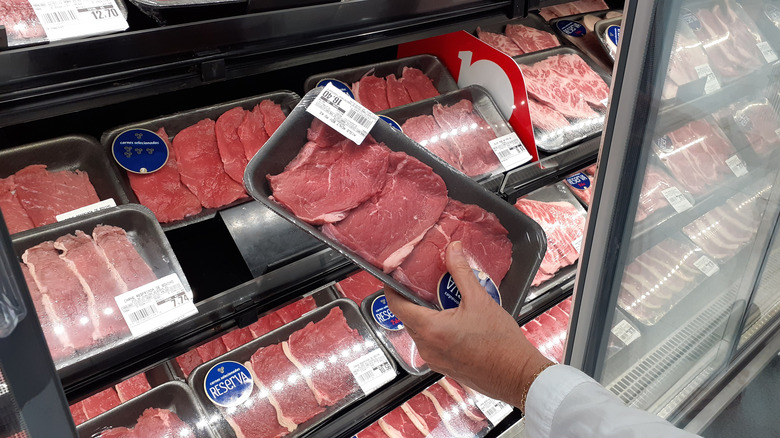Is Meat More Affordable Outside The US?
Inflation has hit the world pretty hard. It's even being felt by meat producers like Tyson Foods as customers have turned to ground beef as a cheaper alternative to more prime cuts. Reuters reports that all signs point to a continuation of these high prices as cattle farmers are reducing the size of their herds. The reason for this is that droughts have put a hard limit on the number of cattle a ranch can sustain and the price of feed has risen, making the investment into cattle more expensive. With supply dwindling and demand still at a relatively stable high, beef prices will continue to rise. Of course, that's Tyson's explanation in the face of a lawsuit accusing the company of price gouging.
Putting aside the debate about exactly why meat prices are rising, it should be noted that the American meat industry has long enjoyed the benefit of government subsidies. Columbia University's Journal of International Affairs lamented during the 2020 Presidential Campaign that none of the Democratic candidates considered addressing the climate issue surrounding meat consumption by reducing the $38 billion the government gives meat companies annually. The Journal also noted that the government also spends less than 1% of that on vegetable farms. Because of this, a Big Mac costs $4, not $11. As American wallets are being pinched by rising meat prices, it's worth asking whether those prices were in fact cheaper than most of the world.
Yes, Americans have gotten off relatively well
While the inflation's high food prices may currently squeeze family meat budgets, Americans have historically paid less for meat. In 2017, the Houston Press shared the findings of Caterwings, a U.K.-based business-to-business catering service. At that time, Caterwings found that Americans pay $17 for a pound of beef tenderloin, which was close to the market average. The study showed that the highest cost of beef tenderloin could be found in Switzerland at the price of $29 per pound. After Switzerland, the highest price tags for meat were found in Norway, Hong Kong, Israel, Sweden, and South Korea (per Eater).
Some may argue that if Americans pay close to the average price of meat, they weren't really benefiting beforehand. However, Caterwings also examined how many hours of it took before a person could purchase about 2 pounds of meat. In Switzerland, for example, a person worked 3 while an American worked 2.6. The disparity is clearer, however, when you consider India. Even though India's average meat prices were 42.26% lower than average, it took 27.36 hours to afford 2 pounds of meat (per Eater). So the subsidies given to the meat industry benefited Americans by keeping the price closer to an average that took less work hours to reach. Inflation and possible price gouging might simply be bringing expectations into line.

